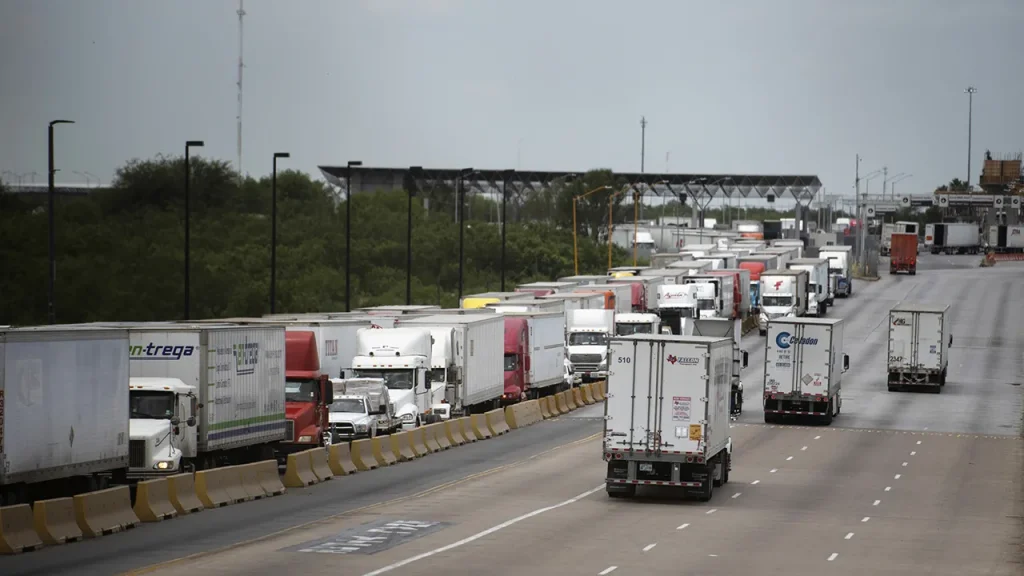The Pervasive Challenge of Human Smuggling: A Case Study and Broader Trends
The recent indictment of Juan Manuel Aguirre, a 49-year-old resident of Laredo, Texas, on charges of attempting to smuggle 101 undocumented immigrants, including 12 unaccompanied children, into the United States, serves as a stark reminder of the ongoing struggles faced by authorities in combating human smuggling. Aguirre’s alleged actions, involving cramming migrants into a locked tractor-trailer, where some reported fearing for their lives due to the suffocating conditions, highlight the callous disregard for human life often exhibited by those engaged in this illicit trade. This case underscores the complex and multifaceted nature of human smuggling, encompassing not only the logistical challenges of transporting individuals across borders but also the grave humanitarian concerns surrounding the exploitation and endangerment of vulnerable migrants.
The incident involving Aguirre is not an isolated occurrence. Data from the U.S. Sentencing Commission reveals a troubling upward trend in the number of individuals sentenced for alien smuggling offenses, reaching 4,731 in fiscal year 2023. This increase reflects the persistent demand for illegal entry into the United States and the corresponding proliferation of criminal networks seeking to profit from this demand. The southern border, particularly in Texas, remains a focal point for human smuggling activities, with the state accounting for over 60% of the U.S. border with Mexico and consequently experiencing a disproportionately high number of smuggling cases. The concentration of smuggling activity along the border underscores the need for enhanced border security measures and targeted law enforcement efforts to disrupt these criminal networks.
The involvement of unaccompanied minors in smuggling operations, as witnessed in the Aguirre case, adds a further layer of complexity and concern. Approximately 10% of alien smuggling cases involve unaccompanied children, who are particularly vulnerable to exploitation and abuse. The perilous journeys undertaken by these children, often facilitated by unscrupulous smugglers, expose them to a range of risks, including physical harm, trafficking, and psychological trauma. Addressing the unique vulnerabilities of unaccompanied minors requires a multi-pronged approach, including strengthening international cooperation to combat child trafficking, providing adequate resources for child protection services, and implementing policies that prioritize the best interests of the child.
The challenges posed by human smuggling extend beyond the immediate border region and have broader societal implications. Increased smuggling activity can strain local resources, including law enforcement, healthcare, and social services. The influx of undocumented immigrants can also exacerbate existing social and economic tensions, particularly in communities already grappling with limited resources. Furthermore, human smuggling can fuel other forms of criminal activity, such as drug trafficking and money laundering, further destabilizing communities and undermining the rule of law.
Efforts to combat human smuggling require a comprehensive and collaborative approach. Enhanced border security measures, including increased surveillance, technology upgrades, and strategic deployment of personnel, are crucial for deterring illegal crossings and apprehending smugglers. However, border security alone is insufficient. Addressing the root causes of migration, such as poverty, violence, and lack of opportunity in source countries, is essential for reducing the demand for illegal entry. This requires international cooperation and development assistance to promote economic growth, improve governance, and strengthen the rule of law in countries experiencing high levels of emigration.
Public awareness campaigns, such as the one launched by Texas Governor Greg Abbott, can play a vital role in informing potential migrants about the dangers of illegal crossings and the deceptive tactics employed by smugglers. By highlighting the risks of exploitation, abuse, and deportation, these campaigns aim to dissuade individuals from undertaking perilous journeys and instead encourage them to pursue legal pathways for migration. However, such campaigns must be carefully crafted to avoid stigmatizing migrants and to ensure that they are accessible to vulnerable populations.
In conclusion, the indictment of Juan Manuel Aguirre for attempting to smuggle over 100 undocumented immigrants into the United States serves as a microcosm of the broader challenges posed by human smuggling. The increasing number of smuggling cases, the involvement of unaccompanied minors, and the concentration of activity along the southern border underscore the need for a multifaceted response. Enhanced border security, international cooperation, and public awareness campaigns are all crucial components of a comprehensive strategy to combat human smuggling, protect vulnerable migrants, and uphold the rule of law. Addressing the root causes of migration and providing legal pathways for immigration are equally important for mitigating the demand for illegal entry and dismantling the criminal networks that profit from human suffering.

